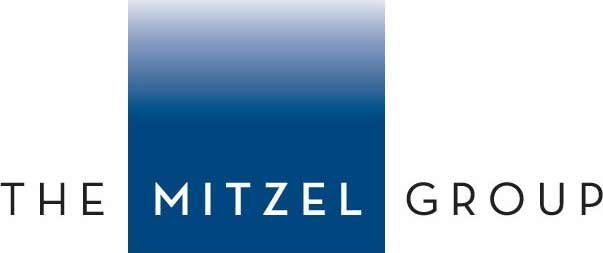This article was written by Krista Mitzel and originally published in HR News, January 2022.
Let’s face it. The COVID-19 pandemic, remote and hybrid work, highly publicized harassment cases and increased attention to diversity, equity and inclusion combined to exert additional pressures on workplace managers to create safe spaces for employees to thrive in their roles. As another result, the job market shifted in workers’ favor over the past year and a half. Employees who were unhappy in their positions took the opportunity to reassess their goals and priorities, find new opportunities and quit. Employers have been left struggling to recruit and retain strong team members.
Many organizations responded by increasing their reliance on remote employees and independent contractors. This ensures adequate staffing, but it also places added layers of challenges to engaging workers and ensuring a sense of psychological safety.
Maintaining a positive organizational culture involves responding to the needs of employees, contractors and the organization
itself. To do that, managers must tackle problems head-on
while implementing multifaceted strategies. As you review the following tips for establishing safe workspaces, enhancing work environments and boosting engagement and retention, keep in mind that under many employment laws, “employee” includes independent contractors and “employer” refers to the entity which hires an independent contractor.
Understand People Leave Managers, Not Jobs
Weak management often drives employee dissatisfaction. Hallmarks of weak management include poor communication, lack of organization, the absence of feedback loops, and unresponsiveness or downright hostility to employees’ concerns.
Those shortcomings lead to employees feeling disconnected from the organization’s mission, feeling excluded from the process
of making decisions that directly affect them, and losing trust
in management. Ennui sets in as employees see a jerk boss who lacks transparency, makes people feel unappreciated and unsafe at work, and condones or ignores bullying. In fact, you are probably thinking about a terrible manager you worked for in the past as you read this.
Acknowledge Strong Management Leads to Higher Job Satisfaction
Strong managers build trust throughout the organization by being transparent and supporting and celebrating employees at all levels so they can do their jobs well. A key to building such trust is having open conversations with employees so they understand and make the most of their talents in order to maximize their contributions. Strong managers ensure each employee knows they fulfill an important role in accomplishing team goals.

The reality is that most organizations suffer from having too few strong managers. Gallup has published two summaries of its talent and leadership research under the respective titles of Only One in 10 People Possess the Talent to Manage and Why Great Managers Are so Rare. The fact that so few people exhibit basic managerial talent means very few employees should reach the ranks of management.
This insight, backed up by data, should not be surprising. A significant number of people are promoted to management because they are good at their job or have tenure, not because they possess good management skills. Supervisors and executives who control the promotion process rarely consider a person’s natural management abilities or shortcomings.
Investing in management training and support is crucial because some of the most common issues labor and employment lawyers see are the result of poor management. Providing training and support to newly minted managers can help guide them in the right direction.
Effective management training equips new managers with a framework for setting performance expectations, giving positive and difficult feedback, handling interpersonal conflict and creating safe environments for communication and collaboration. Displaying each of those managerial skills will create positive ripple effects throughout teams.

Recognize Why Creating a Positive Culture Is the Best Investment
Employees feel valued when good culture—the foundation of every strong team—is supported. This makes committing to creating and maintaining a strong organizational culture a necessary step toward increasing productivity, enhancing job satisfaction and improving employee retention.
Embed Positive Values
Workers perform best on teams with clearly stated purposes. Managers who take the time to explain the “why” for assignments, policies and procedures will see huge benefits for team culture and employee retention. Explaining the why also gives a manager opportunities to highlight connections between what team members are doing and the organization’s mission, values and vision—and to successfully integrate those elements into core processes.
The necessity to inculcate a sense of purpose extends to independent contractors and service providers who integrate with a work team. The ultimate objective should be to encourage all team members to behave consistently with the organization’s core values while working to achieve strategic goals.
For example, if an entity’s core value is teamwork, that value should be emphasized during the hiring process by asking candidates questions related to the value. Additionally, training around the value should be embedded in onboarding and continuing education practices.
Communicate
Two-way communication is central to creating a strong culture. Listening to employees and responding appropriately makes them feel valued and safe.
Managers should proceed from the assumption that most people want to contribute in positive ways. Adopting this attitude makes it easier to foster a culture of open communication, mentorship and opportunities for employees to grow and learn from mistakes.
Communicating openly requires managers to take time to ask for feedback on projects and processes. Conversely, managers must not shy away from offering difficult feedback regarding poor performance. Of equal importance, workers need to feel comfortable speaking up when they have ideas or concerns. Employees who do not feel safe speaking with managers may instead call a plaintiff’s attorney to have their questions and concerns addressed.
Build opportunities for employees to share opinions and insights into everyday processes. Examples of best practices include
- Asking for feedback on issues during meetings, especially from team members who rarely speak up.
- Discussing a recent project and what everyone learned, what went well and what could be improved.
- Scheduling weekly check-in meetings, team-building activities, educational programs or social events for team members to encourage connections, openness and comfort.
Trust cannot be forced, but creating team unity can be promoted by sharing different perspectives and making a norm of authentically sharing thoughts in a safe and welcoming space.
Meet the Challenges of Working in 2022 and Beyond
However a team operates as the COVID-19 pandemic persists— fully in-person, fully remote or hybrid—there are creative ways to facilitate employee engagement and take actions to show workforce well-being and safety are top priorities. Managers must do two things in this regard.
Embrace Flexibility
Office closings in March and April 2020 made flexibility a priority for employers and employees. It quickly became clear productivity is not always connected to butts in seats. At the same time, joining virtual meetings from home meant workers could no longer keep their private lives completely private. Dogs barked. Kids interrupted, asking for a drink of water. A spouse bounded into view of the webcam, unaware a conference call was in session.
In truth, flexibility has long been a missing ingredient in engaging and retaining employees. Organizations that neglect workers’ needs for flexible schedules, personalized wellness benefits, individualized coaching and mentoring, self-directed training and development opportunities, and a range of career paths will become victims of mass resignations.
Embracing flexibility is also important for constantly improving
culture, building loyalty and keeping employees in place rather than going elsewhere for the options and support they desire. So, do not be afraid to make changes and be nimble.
Stay Connected
Checking in is one of the best ways to lead by example in fostering employee engagement. Including employees in training programs, strategic planning sessions and town hall-style meetings in which participants are encouraged to ask questions about big picture issues are additional ways to make workers feel seen, heard and respected.
For the best result, make sure training sessions sufficiently confront hard issues and provide employees the information and skills they need to handle difficult situations. For example, high-quality sexual harassment training and education on unconscious bias and microaggressions will benefit the organization while giving workers a sense of security. Consulting a legal advisor can help with creating trainings that build a strong culture that attracts and retains the best employees.
Keeping multiple channels of personal and formal communications open ensures employees can take advantage of professional development opportunities and are able to raise concerns about bad behavior or mistreatment they experience or witness. Staying in touch with workers also enables managers to keep an eye out for changes in performance. Odd or unexpected behavior could be an indication an employee is struggling and may need support to get back on track.
Workers are typically an organization’s greatest expense and biggest asset. For these reasons, managers must make sure their energy and budgets align on efforts to support employees. As noted above, taking a head-on approach to evolving workplace expectations is paramount for success. You won’t regret it. As many a great guru has said, energy flows where attention goes.

